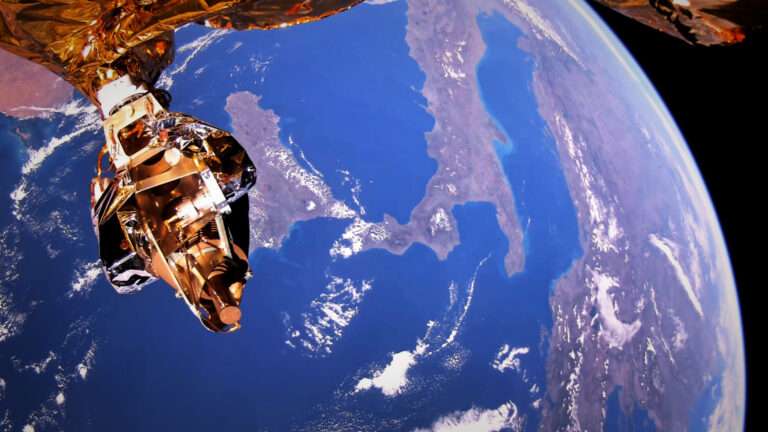The Collapse of a Nearby Galaxy Might Upend Our Understanding of Space!

In a Galaxy discovery that could rewrite what we know about galaxies and their interactions, scientists in Japan have found that the Small Magellanic Cloud (SMC) — one of our closest neighboring galaxies — is slowly being ripped apart.
And the cause? It might just be its bigger sibling, the Large Magellanic Cloud (LMC).
This revelation has astronomers both stunned and excited, because it challenges previous theories and could reshape our entire understanding of how galaxies form, evolve, and interact with each other.

A Closer Look at Our Galactic Neighbors
The SMC and LMC are two small Galaxy orbiting close to the Milky Way, our own galaxy. While they may sound tiny, they are still packed with billions of stars and are a major focus for astronomers trying to unlock the secrets of the universe.
Researchers at Nagoya University in Japan decided to take a deep dive into the motion of Galaxy stars in the SMC. By tracking the movements of around 7,000 massive stars, they hoped to learn more about how this galaxy behaves.
But what they discovered was far from ordinary.

Wait, Is That a Mistake?
At first, the research team — led by Satoya Nakano and Kengo Tachihara — noticed something unusual: the stars in the SMC weren’t moving in the same direction. In fact, they seemed to be pulling away from each other.
Initially, Tachihara thought the results must be a mistake.
“There might be an error in our method of analysis,” he recalled thinking.
But after double-checking their data and analysis, the team confirmed their findings: the SMC is being gradually torn apart, most likely by the gravitational pull of the LMC.
Gravity Wars: The LMC vs. SMC
So, what’s happening here?
The SMC and LMC are close enough to influence each other through gravity. The LMC is the bigger of the two, and its powerful gravitational pull appears to be disrupting the motion of stars in the SMC.
Some of the stars are being pulled toward the LMC, while others are moving away from it — like a cosmic tug-of-war.
“This unexpected movement supports the hypothesis that the SMC is being disrupted by the LMC,” said Tachihara.
In simpler terms, the SMC is slowly being stretched and torn apart due to this powerful gravitational interaction.

The Stars Aren’t Spinning the Way They Should
Another surprising discovery? The stars in the SMC aren’t following a clear rotational pattern like the stars in the Milky Way do.
In most galaxies, stars orbit in an organized fashion, creating the beautiful spiral structures we often see in images of space. But in the SMC, things are different — and chaotic.
This lack of rotation has forced scientists to rethink previous estimates about the galaxy’s mass, structure, and history.
Why This Changes Everything
The SMC has long been considered a “mini-Milky Way” — a nearby, more manageable version of our own galaxy that we can observe in detail. Scientists have used it as a kind of stand-in to study the processes that likely shaped our own galactic home billions of years ago.
But if the SMC is this unstable — and being torn apart — it means our previous assumptions might have been way off.
“This could potentially change our understanding of the history of the three-body interaction between the two Magellanic Clouds and the Milky Way,” explained Nakano.

A Rare Opportunity for Discovery
One big reason this discovery is so exciting is because we can’t get a bird’s-eye view of the Milky Way — we live inside it, after all. But we can observe the SMC and LMC from the outside, making them valuable “case studies” for understanding galactic behavior.
“The SMC and the LMC are the only galaxies in which we can observe the details of stellar motion,” said Tachihara.
By studying how stars move in these galaxies — and how those movements are influenced by gravity and interactions — researchers can learn more about how galaxies grow, collide, and even die.
Final Thoughts: A Galaxy in Crisis, and a Chance to Learn
The slow destruction of the SMC might sound like bad news, but for scientists, it’s a goldmine of new information. Observing a galaxy being pulled apart in real time gives researchers a rare chance to study galactic evolution as it happens.
It also highlights how dynamic and chaotic our universe truly is. Galaxies aren’t static — they move, collide, rip apart, and reshape each other in spectacular and violent ways.
And who knows? This could just be the first of many discoveries that help us finally understand the complex cosmic dance happening all around us.






